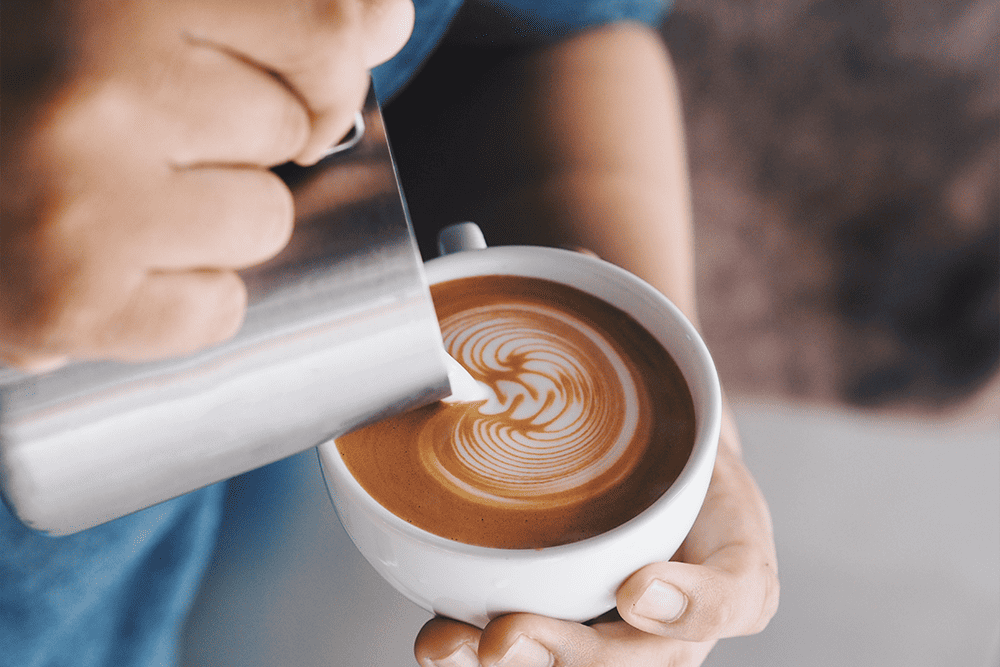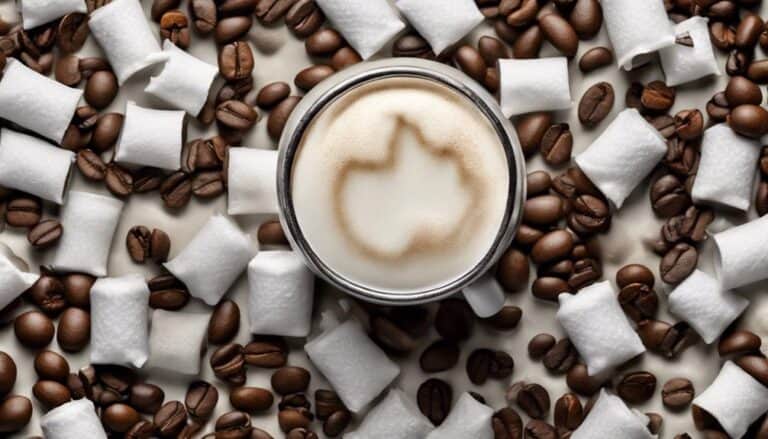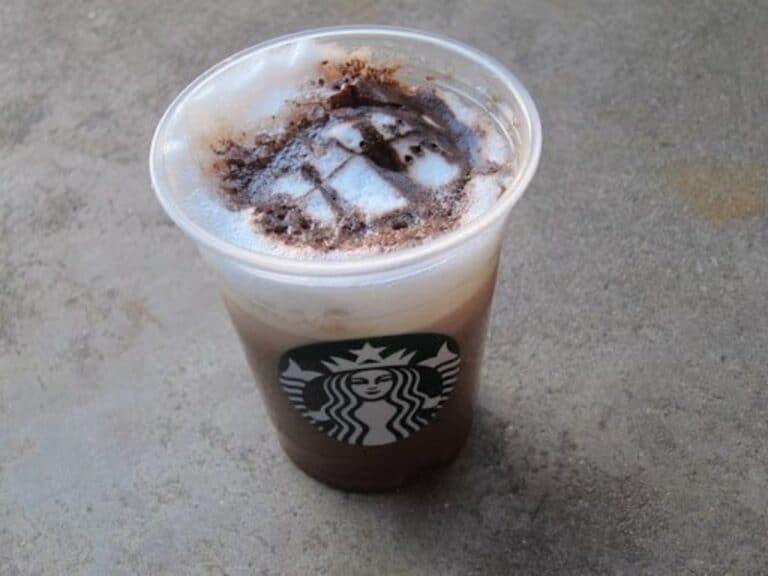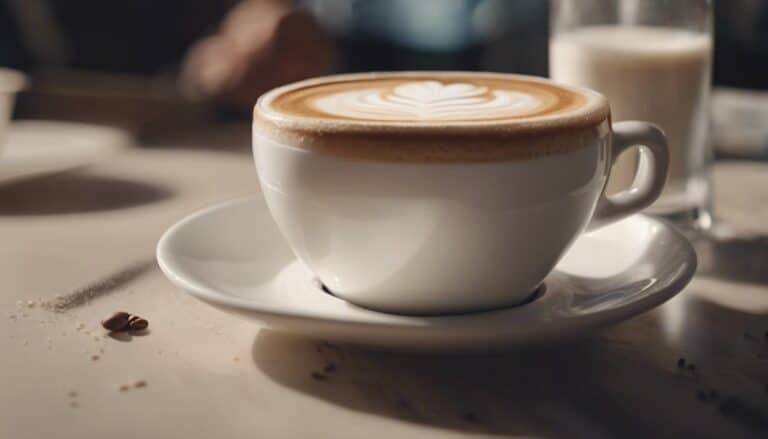What is a Cappuccino: A Clear and Neutral Explanation

Cappuccino is a popular coffee drink that has gained a lot of popularity in recent years. It is a blend of espresso and steamed or frothed milk, served in a small cup. The drink has its roots in Italy, where it was first created in the early 1900s.
The name “cappuccino” comes from the Capuchin order of friars, who wore brown hooded robes that resembled the color of the coffee when mixed with milk. The drink was named after them because of the similarity in color. The drink quickly became popular in Italy and spread throughout Europe, eventually making its way to the United States in the 1980s.
Italian cappuccino is traditionally made with a single shot of espresso, topped with equal parts steamed and frothed milk. The drink has a specific ratio of espresso to milk, which is 1:1:1. The milk is steamed to create a microfoam, which gives the cappuccino its signature velvety texture. The drink is usually served in a small cup, and it is a popular choice for breakfast or as an afternoon pick-me-up.
History and Origin
Cappuccino is a popular coffee drink that originated in Italy. The first attestation of cappuccino comes from the coffeehouses of Vienna in the 18th century, where the Kapuziner emerged as a popular drink made of coffee and whipped cream, usually with sugar. The Viennese bestowed the name “Kapuziner” on an early version that included whipped cream and spices of unknown origin. The drink was later introduced to Italy, where it evolved into the cappuccino that we know today.
According to a popular but unverified legend, cappuccino was invented by the Italian Capuchin friar Marco d’Aviano after the Battle of Vienna. The Capuchin friars are members of the larger Franciscan orders of monks, and their order was founded in the 16th century in Italy. The drink’s name comes from the Capuchin friars as the color of the espresso mixed with frothed milk was similar to the color of the Capuchin robe.
Italian cappuccino, however, first appeared in the early 20th century, after the invention of the espresso machine. The drink was initially served as a breakfast beverage, but it quickly gained popularity throughout the day. Today, cappuccino is a staple in coffee shops around the world and is enjoyed by millions of people every day.
In summary, cappuccino has a rich history that includes Vienna, Italy, and the Capuchin friars. The drink has evolved over time into the Italian cappuccino that we know today and is enjoyed by people around the world.

Ingredients and Preparation
Cappuccino is a popular Italian coffee drink that is made with a combination of espresso, steamed milk, and milk foam. The drink is typically served in a small cup and has a thick layer of microfoam on top. Here’s a breakdown of the ingredients and preparation process for making a perfect cappuccino.
Espresso Base
The first and most important ingredient in a cappuccino is the espresso shot. Espresso is made by brewing finely ground espresso roast coffee with hot water under high pressure. The result is a concentrated shot of coffee that is rich and flavorful. A standard cappuccino usually contains a single shot of espresso, but some variations may use a double shot for a stronger flavor.
Steamed and Frothed Milk
The second key ingredient in a cappuccino is steamed milk. Steamed milk is created by heating milk with an espresso machine’s steam wand. The steam creates tiny bubbles in the milk, which gives it a creamy texture and a sweet, slightly nutty flavor. To make a cappuccino, the steamed milk is poured over the espresso shot.
The third ingredient in a cappuccino is milk foam. Milk foam, also known as frothed milk or foamed milk, is created by introducing air into steamed milk. This creates a layer of froth on top of the milk, which is then spooned onto the cappuccino. The foam should be micro-sized bubbles that stay intact on top of the cappuccino as you drink it.
Additional Ingredients
While a traditional cappuccino is made with only espresso, steamed milk, and milk foam, some variations may include additional ingredients for added flavor. Cinnamon or vanilla can be added to the steamed milk for a sweeter taste, and some people may prefer to use oat milk instead of whole milk for a dairy-free option.
In summary, a perfect cappuccino requires a shot of espresso, steamed milk, and milk foam. The ingredients are carefully combined to create a creamy, flavorful coffee drink. Whether you’re a coffee aficionado or a casual drinker, a cappuccino is a delicious and satisfying way to enjoy your morning coffee.
Types of Cappuccino
Cappuccino is a classic Italian coffee drink that has become popular all around the world. It is a simple yet delicious coffee beverage that is made with espresso, steamed milk, and frothed milk. However, there are different types of cappuccinos that you can try, depending on your taste and preference. In this section, we will discuss the different types of cappuccinos.
Hot Cappuccino
Hot cappuccino is the classic and traditional version of this coffee drink. It is made with freshly brewed espresso, steamed milk, and frothed milk. The milk is heated to a temperature of around 150°F to 160°F, which gives it a creamy texture. The frothed milk is then added on top of the espresso and steamed milk, creating a three-layered drink. Hot cappuccino is perfect for those who love a warm and comforting coffee beverage.

Iced Cappuccino
Iced cappuccino is a refreshing version of this coffee drink that is perfect for hot summer days. It is made with the same ingredients as the hot cappuccino, but with the addition of ice. The espresso and milk are first chilled before being poured over the ice. The frothed milk is then added on top, creating a creamy and refreshing drink. Iced cappuccino is perfect for those who love a cold and refreshing coffee beverage.
Dry and Wet Cappuccino
Dry and wet cappuccinos are variations of the classic cappuccino that differ in the amount of frothed milk used. A dry cappuccino has less frothed milk and more steamed milk, creating a stronger espresso flavor. A wet cappuccino has more frothed milk and less steamed milk, creating a creamier and milder coffee flavor. Dry cappuccino is perfect for those who love a strong coffee flavor, while wet cappuccino is perfect for those who love a creamy and mild coffee flavor.
Flavored Cappuccino
Flavored cappuccinos are variations of the classic cappuccino that have added flavorings. Vanilla and mocha are the most popular flavors used in flavored cappuccinos. Vanilla cappuccino is made by adding vanilla syrup to the espresso and milk, while mocha cappuccino is made by adding chocolate syrup to the espresso and milk. Flavored cappuccinos are perfect for those who love a little extra flavor in their coffee.
In conclusion, cappuccino is a classic coffee beverage that has different variations to suit everyone’s taste and preference. Whether you prefer a hot or cold drink, a strong or mild coffee flavor, or a little extra flavoring, there is a cappuccino variation for you to try.
Nutritional Information
Cappuccinos are a popular coffee drink that can be enjoyed hot or cold. They consist of espresso, steamed milk, and a layer of foam on top. While cappuccinos are a delicious treat, it is important to be aware of their nutritional information.
A typical cappuccino made with 2% milk contains around 140 calories. The calorie count can vary depending on the size of the drink and the type of milk used. For example, a cappuccino made with whole milk may contain more calories than one made with skim milk.
In addition to calories, cappuccinos also contain fat. A 2% milk cappuccino contains around 5 grams of fat. Again, the fat content can vary depending on the type of milk used.
Cappuccinos also contain sugar, although the amount is relatively small. A 2% milk cappuccino contains around 12 grams of sugar. This sugar comes from the milk used to make the drink.
When it comes to protein, cappuccinos contain a moderate amount. A 2% milk cappuccino contains around 9 grams of protein. This protein comes from the milk and the espresso used to make the drink.
Finally, cappuccinos contain carbohydrates. A 2% milk cappuccino contains around 14 grams of carbohydrates. This carbohydrate content comes from the milk used to make the drink.
Overall, cappuccinos can be a tasty treat, but it is important to be aware of their nutritional information. By understanding the calorie, fat, sugar, protein, and carbohydrate content of cappuccinos, you can make more informed choices about your coffee consumption.
Cappuccino vs Other Coffee Drinks
When it comes to coffee, there are many different types of drinks to choose from. While they may all contain coffee, the ratios of ingredients and preparation methods can vary greatly, resulting in unique flavor profiles. Here, we will compare cappuccino to three other popular coffee drinks: latte, macchiato, and cafe au lait.
Cappuccino vs Latte
One of the main differences between cappuccino and latte is the ratio of espresso to milk. A cappuccino typically has a 1:1:1 ratio of espresso, steamed milk, and foam. In contrast, a latte has a higher ratio of milk to espresso, usually around 3:1 or 4:1. This makes lattes creamier and less strong than cappuccinos.
Another difference is in the texture of the milk. In a cappuccino, the milk is steamed to create a thick, velvety foam that sits on top of the drink. In a latte, the milk is steamed to create a smooth, creamy texture throughout the drink.
Cappuccino vs Macchiato
A macchiato is similar to a cappuccino in that it contains espresso and foam, but the ratios are different. A macchiato typically has a 1:1 ratio of espresso and foam, with just a small amount of steamed milk added. This results in a stronger, more espresso-forward flavor than a cappuccino.
Another difference is in the preparation method. A macchiato is typically made by adding the foam to the espresso, then adding a small amount of steamed milk on top. In contrast, a cappuccino is made by adding the foam to the milk, then pouring the entire mixture over the espresso.
Cappuccino vs Cafe au Lait
Cafe au lait is a French coffee drink that is similar to a cappuccino in that it contains espresso and milk, but the preparation method and ratios are different. A cafe au lait typically has a 1:1 or 1:2 ratio of coffee to milk, and the milk is heated but not frothed. This results in a lighter, less creamy drink than a cappuccino.
Another difference is in the type of milk used. While cappuccinos are traditionally made with whole milk, cafe au lait is often made with hot milk and coffee, which can be made with skim, 2%, or whole milk.
Overall, while cappuccino, latte, macchiato, and cafe au lait all contain coffee and milk, the ratios and preparation methods can result in vastly different flavor profiles. Whether you prefer a strong, espresso-forward drink or a creamy, smooth drink, there is a coffee drink out there for everyone.
Making the Perfect Cappuccino
Making the perfect cappuccino requires a few key elements: the right ratio of espresso, steamed milk, and milk foam, the proper texture of the milk, and a thick layer of foam on top. Here are some tips for achieving the perfect cappuccino:
The Ratio
Traditionally, a cappuccino is made with a 1:1:1 ratio of espresso, steamed milk, and milk foam. However, some baristas prefer a slightly different ratio, such as 1:2:1 or 1:3:1. Experiment with different ratios to find the perfect balance for your taste.
The Texture
The texture of the milk is crucial to creating a perfect cappuccino. The milk should be steamed to create microfoam, which is a velvety, creamy texture that enhances the flavor of the espresso. To achieve this texture, use a steam wand or steamer to heat the milk to around 150-155°F. Use a thermometer to ensure that the milk is not overheated, which can cause it to scorch and ruin the flavor.
The Foam
The foam on top of a cappuccino should be thick and creamy, with a velvety texture. To create the perfect foam, use a steam wand or steamer to heat the milk until it reaches around 160-170°F. Then, use a spoon to scoop the foam onto the top of the espresso.
Latte Art
Latte art is a popular way to add a creative touch to a cappuccino. To create latte art, pour the steamed milk into the espresso in a slow, steady stream, moving the cup as you pour to create a pattern. Then, use a toothpick or other small tool to create designs in the foam.
In conclusion, making the perfect cappuccino requires attention to detail and a bit of practice. By following these tips for the right ratio, texture, foam, and latte art, you can create a delicious and visually appealing cappuccino every time.

Cappuccino in Popular Culture
Cappuccino has become a popular coffee drink worldwide, and it has also made its way into popular culture. Here are a few examples:
- Coffee Shops: Cappuccinos are a staple in coffee shops around the world. Many coffee shops have their own unique take on the drink, with variations in the amount of foam, milk, and espresso used. Some coffee shops even offer flavored cappuccinos, such as vanilla or caramel.
- Dictionary: The word “cappuccino” has made its way into the dictionary, with definitions ranging from a coffee drink made with espresso and steamed milk to a type of brownish color. The word’s origin is Italian, and it is named after the Capuchin friars, whose brown hoods resemble the color of the drink’s foam.
- Caffeine: Cappuccinos are a popular choice for those looking for a caffeine boost. A single shot of espresso contains about 63 milligrams of caffeine, and a cappuccino typically contains one or two shots of espresso. However, the amount of caffeine can vary depending on the size and strength of the drink.
In popular culture, cappuccinos are often associated with sophistication and leisure. They are often portrayed in movies and TV shows as a drink for the cultured and refined. However, in reality, cappuccinos are enjoyed by people from all walks of life and are a popular choice for those looking for a delicious and satisfying coffee drink.
Overall, cappuccinos have become a beloved and iconic coffee drink that has made its mark in popular culture. Whether enjoyed at a coffee shop or made at home, cappuccinos are a delicious and satisfying way to enjoy a cup of coffee.
Frequently Asked Questions
What is the difference between a cappuccino and a latte?
A cappuccino is made with equal parts of espresso, steamed milk, and milk foam, while a latte is made with more steamed milk and less foam. The foam in a latte is usually a thin layer on top, while a cappuccino has a thicker layer of foam. Additionally, a latte is typically served in a larger cup than a cappuccino.
How does a cappuccino compare to a macchiato?
A cappuccino is made with equal parts of espresso, steamed milk, and milk foam, while a macchiato is made with espresso and a small amount of steamed milk. A macchiato is stronger and has a bolder flavor than a cappuccino.
What distinguishes a cappuccino from a flat white?
A flat white is made with espresso and steamed milk, with little to no foam. A cappuccino, on the other hand, has a thicker layer of foam on top and a more defined separation between the espresso, steamed milk, and foam layers.
What is the Starbucks version of a cappuccino?
Starbucks offers a traditional cappuccino, which is made with equal parts of espresso, steamed milk, and milk foam. They also offer flavored cappuccinos, such as the Cinnamon Dolce Cappuccino or the Caramel Macchiato Cappuccino.
Which is stronger, a latte or a cappuccino?
Both lattes and cappuccinos have the same amount of espresso, but since a latte has more steamed milk and less foam, it has a milder flavor than a cappuccino. Therefore, a cappuccino is considered to be stronger than a latte.
What sets a cappuccino apart from a regular coffee?
A cappuccino is made with espresso, which is a concentrated form of coffee made by forcing hot water through finely ground coffee beans. Regular coffee is made by brewing coffee grounds with hot water. Additionally, a cappuccino has a thicker layer of foam on top and a more defined separation between the espresso, steamed milk, and foam layers.





